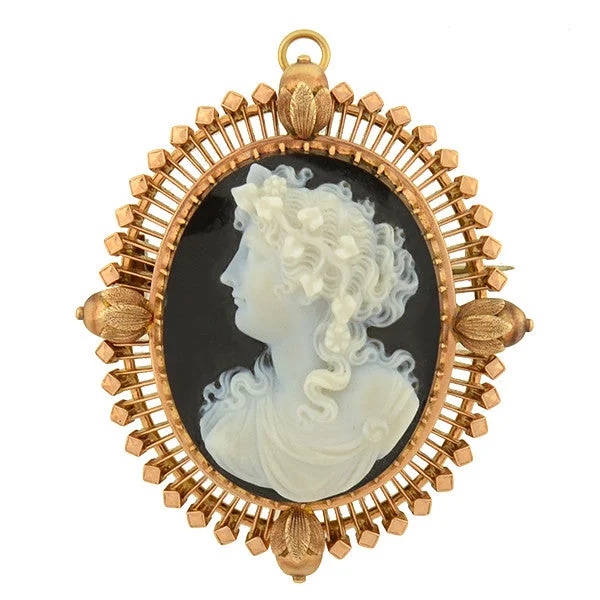The earliest known use of shell for cameo carving was during the 15th and 16th centuries. Before that, cameos were carved from hardstone. The Renaissance cameos are typically white on a grayish background and were carved from the shell of a mussel or cowry. In the mid 18th century, explorations revealed new shell varieties. Helmet shells from the West Indies, and queen conch shells from the Bahamas arrived in Europe, thus sparking a big increase in the number of cameos that were carved from shells.
A large hand carved cameo pin/pendant from the Victorian (ca1880) era! Set in vibrant 14kt rose gold, the beautiful face of a young woman graces the center of this piece. Highly detailed, the woman is wearing what appears to be leaves and flowers in her hair with small tendrils peeking down. A dress is draped across her bust and shoulders and a soft expression can be seen in her face. The stone cameo is prong set within a fantastic beaming gold wirework frame which surrounds the outside of the entire cameo and on the back is a c-catch clasp and a flip down bail. This stunning cameo is simply wonderful and would make a lovely addition to any collection!
Measurements: The pin/pendant hangs approximately 2 1/8" long, is 1 3/4" wide, and 3/4” at its thickest point.
Condition: The overall condition of the pin/pendant is excellent. Besides normal surface wear there is no apparent damage to the cameo or to the gold frame. The bail and clasp are secure,and is in good working condition.

